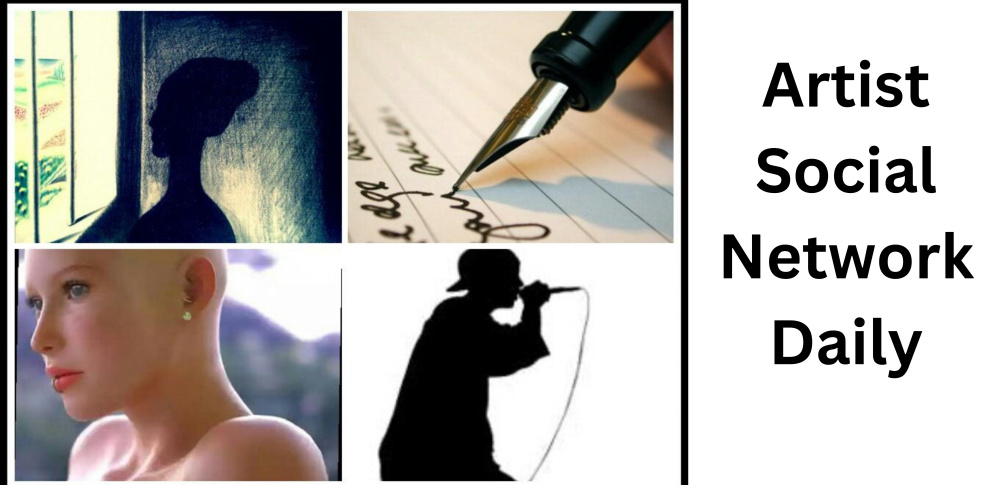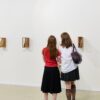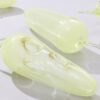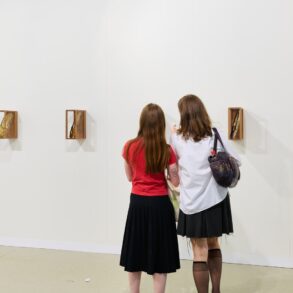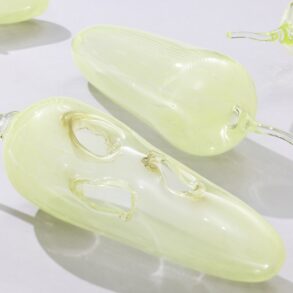SPRINGFIELD— Nayana LaFond, 43, is an acclaimed Western Massachusetts artist who paints by numbers—how many indigenous women have been missing, raped or murdered in what the Bureau of Indian Affairs calls a crisis.
Born and raised in Hampshire County, LaFond is also a citizen of the Metis Nation of Ontario, an indigenous nation in Canada where fur trading is traditional. So is violence against many women.
“I’m a domestic abuse survivor. I come from a long line of women who are survivors,” she told The Republican.
LaFond’s work is on display at the Michele and Donald D’Amour Museum of Art. There are 11 paintings in her exhibit, “Portraits in RED: Missing & Murdered Indigenous Peoples Painting Project.”
In her work, LaFond paints the stern, stark images of women identified as victims of kidnapping, sex trafficking or homicide. She starts with a black canvas and then applies lighter tones — mostly gray and white, but red is predominant.
“A lot of tribes believe red is the only color spirits can see. If a spirit can only see the color red, then everything else would appear gray and black,” she explains.
As she paints, the likeness of LaFond’s subjects emerge, beginning with the eyes.
“I always start with the eyes. If you don’t get those right, it’s not going to look like the person,” she said.
LaFond paints mostly women, but some men too. Men suffer when women in their lives become victims. The painter’s signature is not her name at the bottom of her work, but a universal symbol — a red hand covering the mouths of her subjects.
“It represents being silenced and the blood of our people. It also represents the act of going to war and fighting against something,” said LaFond.
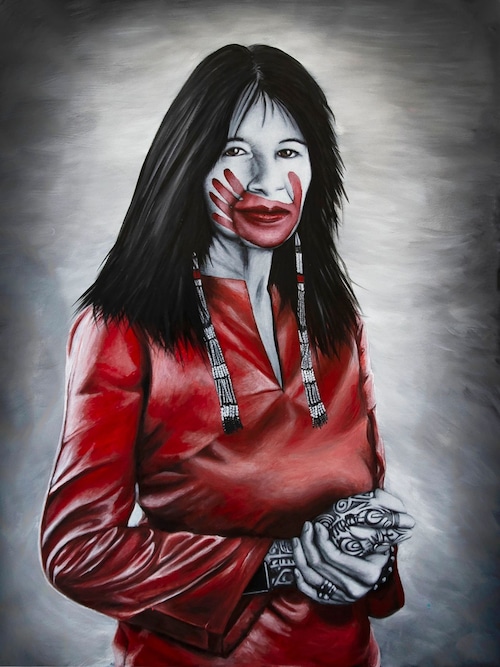
“Joy” is one of the paintings by Western Massachusetts artist Nayana LaFond, on display at the Springfield Museums as part of “Portraits in RED: Missing & Murdered Indigenous Peoples Painting Project.” (Courtesy Nayana LaFond)Nayana LaFond
Crime of injustice
Indigenous women are ten times more likely to be victims of violent crime than the national average of crimes against non-native women, according to the Bureau. Those crimes are also far more likely to go unsolved than violence against non-indigenous women.
Of the over 5,700 missing native women and girls counted by the National Crime Information Center (NCIC) in 2016, only 116 were registered in the federal missing persons database, the Bureau reports.
LaFond has produced more than 100 paintings, and they are on display across the country, including exhibits in Oregon, Washington, Chicago, Springfield and Greenfield.
She began painting during the pandemic when nearly everyone was at home. She was part of an online group called Social Distance Powwow. Members shared videos of themselves in native dress. They took selfies with red hands, and they danced and told stories.
The group has 100,000 members and its mission is “to foster a space for community and cultural preservation, to retain cultural knowledge through indigenous songs, dance and arts. Bringing our marginalized perspectives to the world for future generations,” according to the organization.
During a meeting of the group on May 5, 2020—the National Day of Awareness for Missing and Murdered Indigenous Women and Relatives—LaFond asked Lauraina Bear, a member of the group, for permission to paint the woman’s image.
When the artist eventually shared her work, she said she was flooded with requests from others who also wanted paintings of themselves or their families.
“It just blew up overnight,” said LaFond.
Working from photographs of the victims, LaFond paints with humility and reverence. She wants neither money nor recognition, living mostly on income from her other artwork.
“It would be incredibly disrespectful and dishonorable (to make money) with this topic. These are real people, a lot of whom are no longer here. This isn’t about me,” she stated.
“I had to figure out the point as I was going along because I didn’t know I was going to be doing this. The point is to share the stories and raise awareness, even if one person sees it and is inspired to help,” she said.
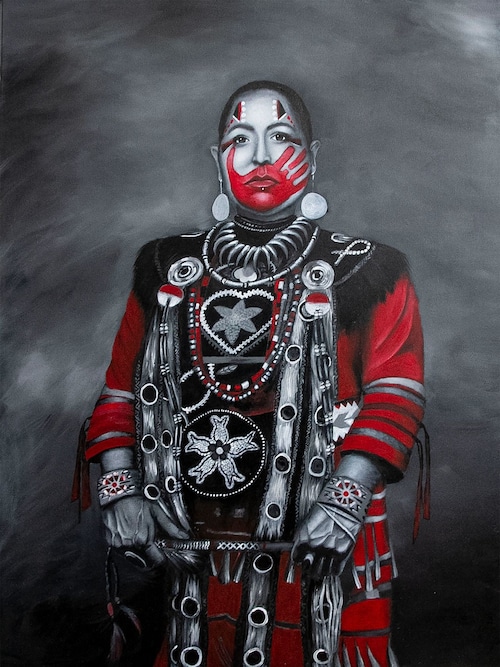



“Kimberly” is one of the paintings by Western Massachusetts artist Nayana LaFond, on display at the Springfield Museums as part of “Portraits in RED: Missing & Murdered Indigenous Peoples Painting Project.” (Courtesy Nayana LaFond)Nayana LaFond
Found alive
While she does not boast or take bows, LaFond revealed a woman was found alive when the public saw her likeness in a painting on display in Oregon. The person was rescued in Los Angeles.
“It was definitely a situation where their life was in danger. It was through the image of the painting being shared that people said they’d like to help, and it went from there,” she said.
LaFond said she does not try to interpret her subjects—she just paints what she sees in photographs and looks into their eyes.
“I think about what they experienced, how old they were, if they had children. I hope I do you justice. I hope this makes you happy. I hope I don’t do anything that offends you,” revealed LaFond.
When she finishes a piece, Lafond shares it with the family before it goes on display.
“I had one family tell me it was like a memorial. They hadn’t had one because their loved one was never found. It’s been overwhelmingly good, but very emotional. Some people see themselves and it’s very difficult to see yourself with the red hand. It’s triggering,” she said.
LaFond said she never approaches anyone asking if she can paint them or their loved one. She waits for them to come to her when the time is right.
The artist planned to do this work for the rest of her life, but instead, she is beginning to wind down. When she started during COVID, she was meeting remotely with families. Now she goes to their homes, hears their stories and feels their pain.




“Woman of the White Buffalo” is one of the paintings by Western Massachusetts artist Nayana LaFond, on display at the Springfield Museums as part of “Portraits in RED: Missing & Murdered Indigenous Peoples Painting Project.” (Courtesy Nayana LaFond)Nayana LaFond
“It’s a lot more difficult to do that in person than I thought. The first two years were cathartic, but the last three have been emotionally draining,” she admitted.
On top of that, she said people are beginning to focus more on her than the victims, something from which she recoils.
Because her paintings appear online, LaFond said the images are being stolen, slapped on things like mugs, T-shirts and jewelry. and sold as souvenirs.
“I promised every family that would not happen,” she said.
As each exhibit ends, LaFond is taking back the paintings. She plans no more public displays and is giving the art to victims’ families. The end is coming at a time when she is feeling vulnerable for being so outspoken.
“It is a dangerous topic, there are people that don’t want you to talk about this,” she said. “It is something that pushes the buttons of people in power.”
“Portraits in RED” will be on view in Springfield through Sept. 7. Admission to the Museums is $25 for adults, $16.50 for seniors/college student, and $13 for ages 3-17. Members and Springfield residents are admitted free.
This post was originally published on this site be sure to check out more of their content
